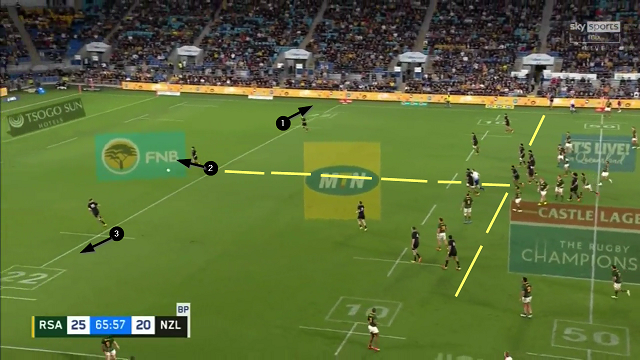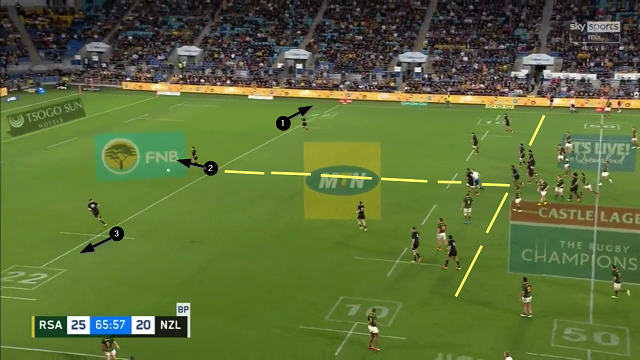Is the full-back position about to get up-sized? Part 1
The story of Wales and British & Irish Lions inside centre Jamie Roberts bears some re-telling. Although Roberts became a dominant performer in Warren Gatland’s Wales and Lions’ teams between 2008 and 2017, winning 94 caps for the national side and another three for the Lions, he was never really a number 12.
In the Welsh age group teams, Roberts started life in the back three, mostly at full-back. He made his full senior debut for Wales on the right wing against Scotland in February 2008, and started at number 15 in the first tour Test of the summer versus the Springboks.
It was only after that game that Gatland began to see Roberts’ 6 feet 4 inches, 110 kilo frame rather differently, and took the radical step of moving him to inside centre on the following weekend. ‘The Doc’ (Roberts qualified as a medical doctor in 2013) never looked back, and the rest as they say, is history.
The contemporary shift, accelerated by the new kicking law trials which reward long kicking towards the corners of the field (the 50/22) and into the in-goal area (goal-line drop-out), is moving fast in the opposite direction.
The 2021 Rugby Championship finished with all of the top three teams (New Zealand, Australia and South Africa – in that order) featuring goliaths at full-back: Jordie Barrett for the All Blacks, Reece Hodge for the Wallabies and Frans Steyn for the Springboks. All are between 6’3 and 6’5 in height and somewhere between 100 and 100 kilos in weight. They are big, big men.
The current pair of articles (of which this is the first), will look at ways in which the full-back spot is looking towards a considerable upsizing in the professional game.
The most obvious quality shared by all three players is that they have prodigious kicking boots – both out of hand and off the tee. All are able to kick goals from their own side of halfway, and at least one of them (Steyn) is a specialist long drop-kick expert.
The ability to play a game of force-back during kicking duels, and pull defenders out of the front line and into the backfield, is key under the new trials laws, and Frans Steyn’s presence in the second half of South Africa’s titanic second match against New Zealand provided a huge fillip to the kicking game.
In both examples Steyn is out-kicking the Kiwi backfield to the corners (the ball travels beyond the nearest receiver), and launching the ball from one 22 to the other in the process. In the first instance, New Zealand found touch from a quick lineout on their own 40m line (a big net gain for the Boks), and in the second they had to accept a defensive throw just outside the 22.
The ultimate reward was a 50/22, with an attacking lineout throw to follow for South Africa:
The impact of Steyn’s long kicking to the corners was concrete and cumulative. It forced New Zealand to widen the gap between their front line of defenders and the backfield, and add an extra defender at the back when Steyn’s was due to return fire:

Although the opportunity is wasted on this occasion with an extravagant drop-goal attempt, there is 20-25 metres of space between the two lines of defence and one less defender than normal on the line, so the chances of success with ball in hand have also been increased.
Reece Hodge has demonstrated the effectiveness of kicking straight down the middle of the paddock if the opposition insists on deploying no more than two men in backfield defence:
On both occasions the outcome was a positive one for Hodge’s team, with an attacking lineout throw well inside the opposition half. Nor is a goal-line drop-out an attractive result for the defensive team, if the ball rolls in-goal in the first instance.
Hodge’s physical presence on chase was also a very useful add-on when the non-kicking side attempted to return one of his long bombs:
Hodge outkicks the Springbok backfield out to the left corner, and then leads the chase on to Damian de Allende when the Springbok centre tries to bring the ball out of the 22 by hand.
Size at the back, when it includes kicking range, is becoming an increasingly valuable feature in the modern game. Reece Hodge, Frans Steyn and Jordie Barrett are all equally long-range kickers off the tee – able to land goals from within their own half – and out of the hand. They can genuinely threaten the 50/22 or goal-line drop-out and generate excellent attacking positions on the next sequence of play. If the defence is forced to drop deeper, or add another player to the backfield, it represents another small but significant win for the kicking/countering team. Maybe size matters after all.
*In the partner article I will examine how size at full-back increases effectiveness under the high ball and on attack.












.jpg)

.jpg)







